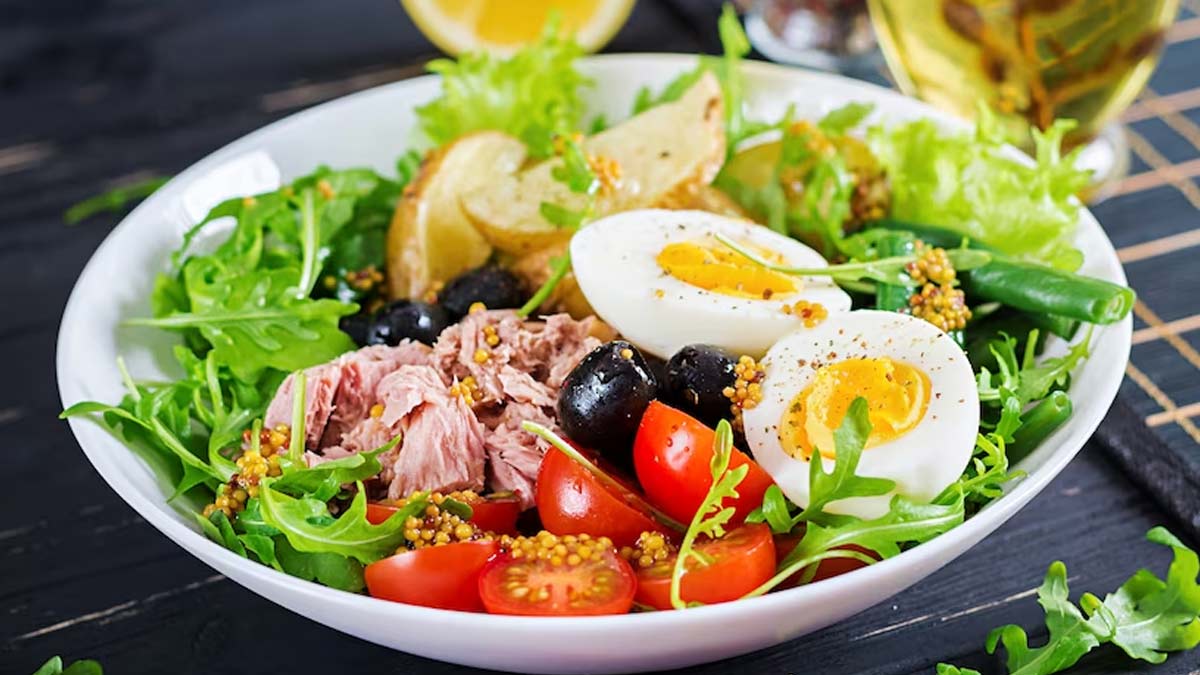
When following a ketogenic diet, a common question arises: Is it unsafe to eat non-vegetarian food daily? Generally the answer is no. It's not inherently unsafe. In fact, non-vegetarian foods can be a vital part of a keto diet due to their high protein and fat content, both of which are essential for maintaining ketosis. Like any diet, the key is in choosing the right types of foods and understanding how they fit into the keto framework.
Table of Content:-
Understanding the Keto Diet
According to Journal Nutrients, the ketogenic diet primarily focuses on fat intake, which should comprise about 70-80% of your daily caloric intake. Protein is also important but in moderate amounts roughly 20%, while carbohydrates need to be significantly reduced about 5-10%. The aim is to shift your body's metabolism from using carbohydrates as the primary source of energy to burning fats, thereby producing ketones as a byproduct, which the body can use for energy.

Also read: Do You Know Keto Diet Was First Developed For Epilepsy? Know How It Works
Non-Vegetarian Foods on Keto
Non-vegetarian foods, particularly meats, are naturally low in carbohydrates and high in protein and fats, making them ideal for the keto diet. Here’s how you can include them safely.
You Need To Choose the Right Types of Meat
Fatty cuts
Opt for fatty cuts of meat like ribeye steaks and thighs or legs of poultry, as these are higher in fats which are beneficial for maintaining ketosis.
Fish and seafood
Salmon, mackerel, and other fatty fish are excellent as they provide omega-3 fatty acids, which are good for heart health.

Preparation Matters
Cooking methods
Grilling, baking, or sautéing in healthy fats like olive oil or butter is preferred. Avoid breaded or deep-fried meats, as they contain carbs.
Seasoning
Be mindful of marinades and sauces, which can contain sugar and carbs. Opt for herbs, spices, and low-carb condiments.
Moderate Protein Intake
While protein is essential, too much can lead to gluconeogenesis, where the body converts excess protein into glucose, potentially pulling you out of ketosis. Balance your protein intake with your fat intake.
Watch Out for Hidden Carbs
Certain processed meats like sausages, bacon, or ham can contain hidden sugars and fillers that add carbs. Always read labels carefully or choose freshly prepared meats when possible.
Incorporate Other Keto-Friendly Foods
Besides meats, include other keto staples like low-carb vegetables example is spinach and broccoli, full-fat dairy products, nuts, and seeds to ensure nutritional balance.
Potential Risks and Considerations
Nutritional Deficiencies
According to Journal Frontiers, relying heavily on meat can lead to deficiencies in fibre and certain vitamins and minerals. It’s important to incorporate a variety of foods to ensure a well-rounded diet.
Also read : Intermittent Fasting and Keto Diet Can Hamper Cardiovascular Health: Study
High Cholesterol and Heart Health
Some people may experience elevated cholesterol levels on a keto diet ich in animal fats. Monitoring blood lipid levels and choosing healthier fats can help mitigate this risk.
Eating non-vegetarian food is safe. It may also be incredibly beneficial when on a keto diet, if you choose the proper sorts and cook them in a keto-friendly manner. It's usually a good idea to consult with your doctor before making any big dietary changes, especially if you have underlying health concerns. This guarantees that your food is balanced and good for your health.
Also watch this video
How we keep this article up to date:
We work with experts and keep a close eye on the latest in health and wellness. Whenever there is a new research or helpful information, we update our articles with accurate and useful advice.
Current Version